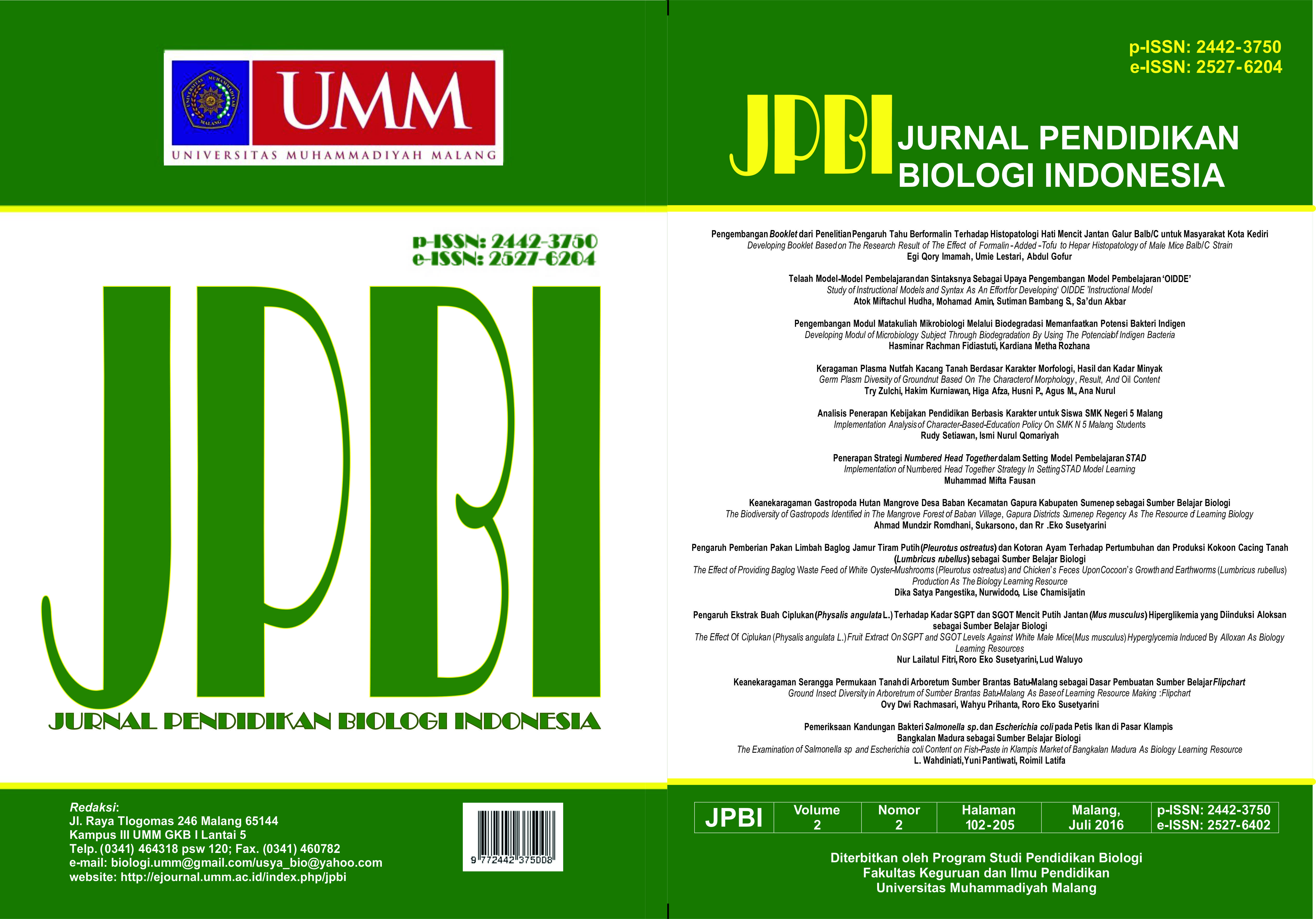THE EFFECT OF PROVIDING BAGLOG WASTE FEED OF WHITE OYSTER-MUSHROOMS (Pleurotus ostreatus) AND CHICKEN’S FECES UPON THE COCOON’S GROWTH AND PRODUCTION OF THE EARTHWORMS (Lumbricus rubellus) AS THE RESOURCE OF BIOLOGY INSTRUCTION
DOI:
https://doi.org/10.22219/jpbi.v2i2.3688Abstract
Earthworms (Lumbricus rubellus) are commonly utilized as a feed that contains lot of proteins needed by poultry, such as aves, fish, and shrimps. The effort of improving earthworms' (Lumbricus rubellus) harvesting, in fact, is affected by the soar of the feed’s price as well. Earthworm (Lumbricus rubellus) breeders must be more innovative in finding the alternative food for the earthworms.This research employed Completely Randomized Design design through four treatments and two repetitions. In addition, the sample constituted the 640 ciliated earthworms (Lumbricus rubellus) by using randomized sampling technique. This research revealed that providing baglog waste feed of white oyster-mushrooms, the chickens’ feces, and the combination of the two gave a significantly highest effect (based on sig.<0,05) upon the cocoon’s growth and production of the earthworms (Lumbricus rubellus) in treatment A3B3 (10 cm), the heaviest mass of the earthworms was in treatment A3B3 (4.00 grams), and the highest production of cocoon was in treatment A3B3 (64.5 items). There was an effect of providing baglog waste feed of white oyster-mushrooms, the chickens’ feces, and the combination of the two upon the growth and the production of the earthworms’ cocoon. Further, the result of this research could be used as the resource of Biology instruction due to the appropriateness and the qualification that met the six vital aspects; they were: (1) potential clearance; (2) appropriateness to instructional goals; (3) target consideration; (4) informational clearance; (5) exploration clearance; and (6) acquisition clearence.
Downloads
Downloads
Published
Issue
Section
License
Authors who publish with JPBI (Jurnal Pendidikan Biologi Indonesia) agree to the following terms:
- For all articles published in JPBI, copyright is retained by the authors. Authors give permission to the publisher to announce the work with conditions. When the manuscript is accepted for publication, the authors agree to automatic transfer of the publishing right to the publisher.
- Authors retain copyright and grant the journal right of first publication with the work simultaneously licensed under a Creative Commons Attribution-ShareAlike 4.0 International License that allows others to share the work with an acknowledgment of the work's authorship and initial publication in this journal.
- Authors are able to enter into separate, additional contractual arrangements for the non-exclusive distribution of the journal's published version of the work (e.g., post it to an institutional repository or publish it in a book), with an acknowledgment of its initial publication in this journal.
- Authors are permitted and encouraged to post their work online (e.g., in institutional repositories or on their website) prior to and during the submission process, as it can lead to productive exchanges, as well as earlier and greater citation of published work (See The Effect of Open Access).

This work is licensed under a Creative Commons Attribution-ShareAlike 4.0 International License.


















